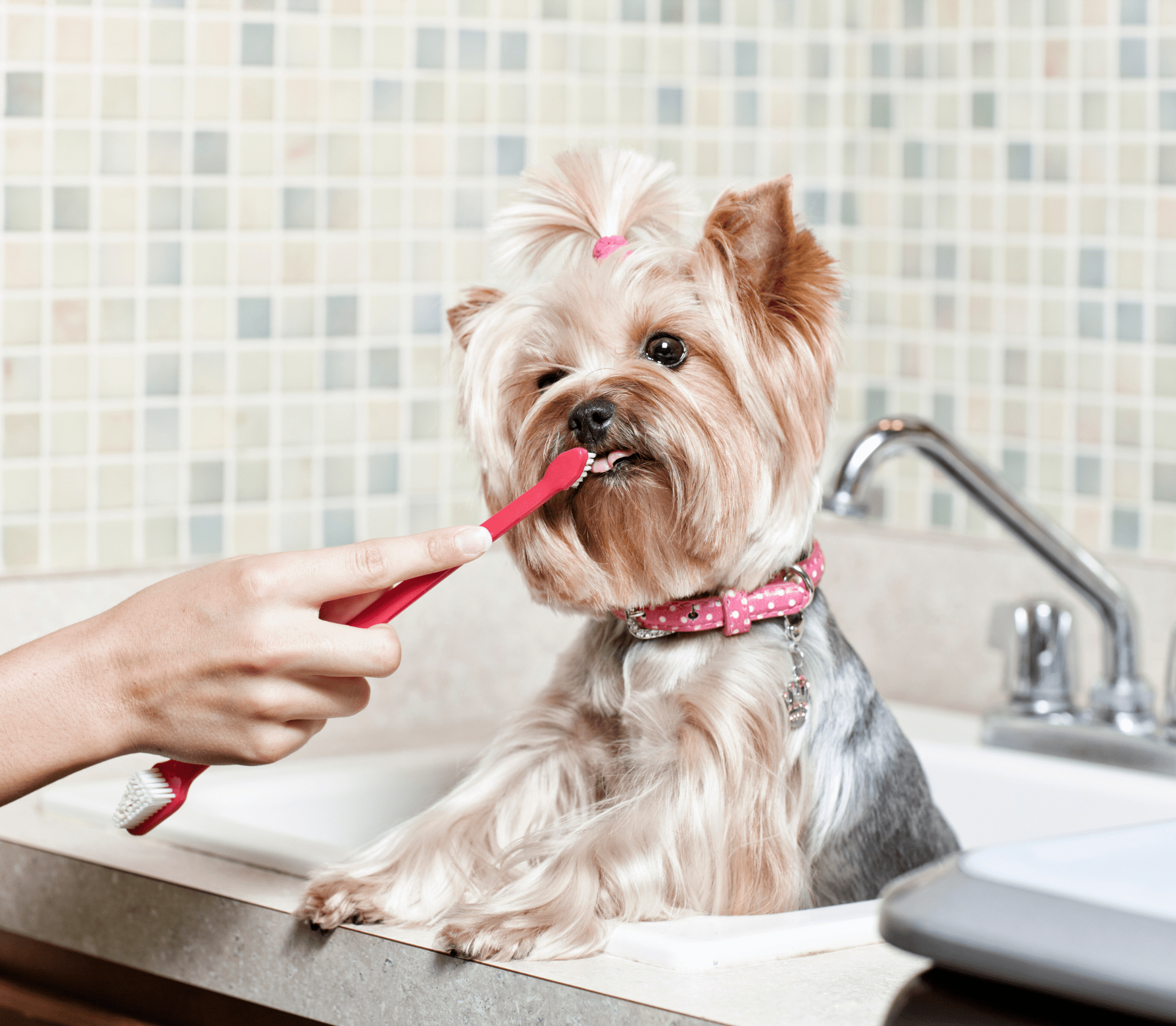Teach Fido To Swim
Swimming is a great way to cool down on a hot day. Many of our canine buddies also like swimming. Of course, even pups that take to water naturally need help in the beginning. Dogs, like humans, must learn to swim. Continue reading for tips from a Savage, MN veterinarian on teaching Fido to swim.
What Is the Best Age for Teaching a Dog to Swim?
As a general rule, four months is an appropriate age. By then, Fido should have a decent command of all of his legs and a basic understanding of dog behavior. This is also the perfect time to introduce your pet to new experiences, as it is within the critical socializing window. Plus, if you wait too long, your canine pal may become fearful of the water. If Fido is too young, he may not have the strength to learn to swim safely.
Of course, if your puppy has any health difficulties, you’ll need to consult your veterinarian. If your furry friend has recently been spayed or neutered, wait until he or she has fully recovered. Ask your veterinarian for particular guidance.
Can You Teach an Older Dog to Swim?
Yes … though of course it ultimately depends on the dog. That said, despite the old adage, you absolutely can teach an old dog new tricks. Even senior dogs can learn to swim safely.
You don’t want to force the matter, however. You’ll also need to take some extra precautions. Senior dogs, for example, are more susceptible to temperature fluctuations. They will also tire faster than younger pets.
Can All Dogs Swim Naturally?
Not always. Most dogs can learn to paddle or navigate on water while wearing a flotation device. However, this does not mean that they can swim safely. Puppies with long spines and/or small legs, such as Corgis and Dachshunds, cannot steer well in water and can quickly have issues. Toy breeds, such as Pomeranians, can drown in just a few inches of water. Brachycephalic puppies, such as bulldogs and pugs, are also at serious risk of drowning due to their tiny airways. Furthermore, many large dogs and certain elderly are not fit for it. Contact your Savage, MN veterinarian for further information.
Get A Life Jacket For Fido
It’s a good idea to start Fido on a pet life jacket. This enhances both buoyancy and stability. Furthermore, it is critical to assist your pet in becoming adjusted to new surroundings for safety reasons. He would have to wear one if you took him boating or camping near bodies of water. This can also help boost his confidence.
Make your canine pal wear his life jacket around the house to help him become accustomed to it. Make sure it fits comfortably!
Choose A Pawesome Swimming Spot
You don’t want to throw Fido in the deep end and expect him to figure it out. That is pretty hazardous! Furthermore, even if your canine buddy learns to paddle, the experience could be stressful for him. He could have a lifelong fear of water and you.
Go somewhere shallow, ideally a spot with a gradual slope. If you can, go to a beach that welcomes dogs.
Get Your Puppy Ready for Swimming
Take Fido for a short walk before swimming with him. You want to warm him up a little. However, do not go overboard. Your furry friend should not be too tired for his swim lesson!
Choose The Appropriate Time
You want to choose a time when the water is both comfortable and smooth. Fido may not enjoy swimming in cold or rough water!
Take Fido’s Swim Lessons Slowly
When you’re ready to dip your toes—or, technically, your furry friend’s paws—in the water, use caution. Talk to Fido in a gentle tone and support him as he learns.
Swimming with your canine buddy is a terrific option. This will make Fido feel safe. You’ll also be able to help him in the water, either by holding him or hanging on to the handle of his dog life jacket.
Normally, we advocate employing rewards (treats) as a motivator throughout training. In this case, however, you should only offer praise and comments until your furry student has all four paws on solid ground. Save the snacks for later!
Following the Lesson
After Fido has emerged from the water, rinse him thoroughly to remove any salt, sand, or chlorine from his fur.
You’ll also want to be cautious about your dog’s furry feet. After a swim, his paws will be exceedingly delicate. When dogs’ toe beans get wet, they become delicate and wrinkly, just like our skin.
Following the session, keep your pet on soft ground. After swimming, he may get painful blisters and abrasions from running on hot or uneven surfaces like sand or swimming pool decks.
Which Dogs Are Good Swimmers?
Initially, many of our canine companions were given swimming tasks. Many retrievers, for example, would return ducks and other game to their owners. In fact, some dogs have webbed feet and slippery coats to help with this.
Here’s a list of pups who typically adore the water:
- Portuguese Water Dogs
- Labrador Retriever
- Newfoundland
- Irish Water Spaniel
- Chesapeake Bay Retriever
- Standard Poodle
- Nova Scotia Duck-Tolling Retriever
- English Setter
- Otterhound
- Curly-Coated Retriever
- Boykin Spaniel
- Barbet
- Lagotto Romagnolo
- Irish Setter
- German Shorthaired Pointer
- Schipperke
Even pups who are normally excellent swimmers, such as Golden Retrievers, may not necessarily enjoy being in the water. Fido will still have to learn to swim. He may also simply dislike it.
Pool Safety for Dogs
If you have a pool or want to take Fido somewhere with one, you must take certain measures to keep your beloved pet safe.
The first thing we recommend is showing your canine buddy where the steps are. This is extremely important! If Fido falls in when no one is looking, it may save his life! You want to make sure that the information is retained, so take your time with this training and test your furry buddy a bit. You might also try putting a visual indicator near the pool stairs, such as a life buoy.
What else should you keep in mind with pools? The cover for the pool. Fabric covers may not be able to support Fido’s weight. However, your canine pal could mistake it to be a solid surface and run out onto it. This can be quite dangerous. We recommend that you play it safe by keeping the pool gated when not in use.
The most important thing, of course, is not to let your pet near water alone. Even dogs who are good swimmers can feel worried if they accidentally fall in. Always keep a very close eye on your pooch when he is near the water!
Conclusion: Dogs can enjoy swimming while remaining safe. It’s also an excellent method for them to get some exercise and, of course, cool off. However, it is crucial to note that not all dogs are inherently water-friendly. Many people must be taught how to swim. Others simply aren’t made out for the water. Before introducing your pet to swimming, consult with your veterinarian.
Schedule An Appointment With Your Savage, MN Pet Clinic
Have any questions about your dog’s health or care? Please contact your local Savage, MN pet hospital at any time. We are committed to providing exceptional treatment.




